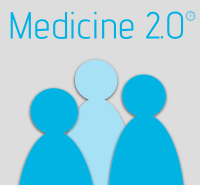Virtual Health Platform
|
If you are the presenter of this abstract (or if you cite this abstract in a talk or on a poster), please show the QR code in your slide or poster (QR code contains this URL). |
Abstract
The interoperability of Electronic Medical Records is a worldwide problem difficult to solve and with lots of resources involved and working on it. There are some standards to interchange information that are being implemented and good advances have been made.
But the reality is that the clinical information is poorly shared in regions and countries and even less between countries. That means that a citizen that moves between countries has no guarantee that, if something happens and medical service in requiered, the clinicians have the right information to treat the patient.
At a european level the problem is adding the fact that the european citizens have the right to have health services at any european contry. The multilingual problem, poor interoperability implementation technology makes the solution difficult to achieve. For that reason the EU is funding projects through the FP7 that pretend to achieve the "Health without barriers".
In the context os the Innovative European Program (FEDER 2000-2006) a Balearic Islands (Spain) consortium has defined and implemented a project that pretends to provide a solution for Electronic Patient Record Interoperability between european countries. Such a project has been evaluated in the Medical Tourism environment, dinamic sector happy to provide high level service to tourists.
The implemented solution (Virtual Health Platform) consists on a basic interoperable platform with this characteristics:
- A personal health record with the basic and resumen relevant clinical information from the patient (diagnosis, medication, allergies) but codified with SNOMED a worldwide multilanguage medical standard terminology.
- A virtual asyncronous teleconsultation solution that allows referral physician to ask for a second opinion or to referer a patient. It allows to add interconsultation information plus images and videos in Dicom Format (also for interoperability reasons)
- The interoperable platform allows to send and receive HL7 messages
- The platform is integrated with a USB Devices and allows to store the medical data into a secure USB bracelete.
The platform allows to cover the workflow:
1. the patient that is going to travel can store some critical data on the Virtual Health Platform. If travelling because of a medical tourism process can also perform a teleconsultation and send some presurgery information or images.
2. The source health center received the information and can manage the teleconsultation and schedule the patient.
3. To treat the patient the physicians can access to the personal health record and get the information into a local language (SNOMED performs the translation).
4. If there is an emergency or connection problem the information can be reviewed trought the usb bracelete.
5. when the patient has already been treated and has to go back home (other country) the information is stored in the personal health record platform.
The Virtual Health Platform acts as Medical Record Gateway allowing access to information between countries, translating the clinical content and integration with other information systems.
As a result of the project there are two outpus:
- the virtual health platform
- a paralel study of medical tourism business cases and requirements
The project is one more step in the interoperability problem that europe is trying to reach. To focus in a very dinamic sector like tourism has been good to achieve concrete results fast. The standard terminology SNOMED has helped to get translation and to better organise the medical record. Standards are necessary.
But the reality is that the clinical information is poorly shared in regions and countries and even less between countries. That means that a citizen that moves between countries has no guarantee that, if something happens and medical service in requiered, the clinicians have the right information to treat the patient.
At a european level the problem is adding the fact that the european citizens have the right to have health services at any european contry. The multilingual problem, poor interoperability implementation technology makes the solution difficult to achieve. For that reason the EU is funding projects through the FP7 that pretend to achieve the "Health without barriers".
In the context os the Innovative European Program (FEDER 2000-2006) a Balearic Islands (Spain) consortium has defined and implemented a project that pretends to provide a solution for Electronic Patient Record Interoperability between european countries. Such a project has been evaluated in the Medical Tourism environment, dinamic sector happy to provide high level service to tourists.
The implemented solution (Virtual Health Platform) consists on a basic interoperable platform with this characteristics:
- A personal health record with the basic and resumen relevant clinical information from the patient (diagnosis, medication, allergies) but codified with SNOMED a worldwide multilanguage medical standard terminology.
- A virtual asyncronous teleconsultation solution that allows referral physician to ask for a second opinion or to referer a patient. It allows to add interconsultation information plus images and videos in Dicom Format (also for interoperability reasons)
- The interoperable platform allows to send and receive HL7 messages
- The platform is integrated with a USB Devices and allows to store the medical data into a secure USB bracelete.
The platform allows to cover the workflow:
1. the patient that is going to travel can store some critical data on the Virtual Health Platform. If travelling because of a medical tourism process can also perform a teleconsultation and send some presurgery information or images.
2. The source health center received the information and can manage the teleconsultation and schedule the patient.
3. To treat the patient the physicians can access to the personal health record and get the information into a local language (SNOMED performs the translation).
4. If there is an emergency or connection problem the information can be reviewed trought the usb bracelete.
5. when the patient has already been treated and has to go back home (other country) the information is stored in the personal health record platform.
The Virtual Health Platform acts as Medical Record Gateway allowing access to information between countries, translating the clinical content and integration with other information systems.
As a result of the project there are two outpus:
- the virtual health platform
- a paralel study of medical tourism business cases and requirements
The project is one more step in the interoperability problem that europe is trying to reach. To focus in a very dinamic sector like tourism has been good to achieve concrete results fast. The standard terminology SNOMED has helped to get translation and to better organise the medical record. Standards are necessary.

Medicine 2.0® is happy to support and promote other conferences and workshops in this area. Contact us to produce, disseminate and promote your conference or workshop under this label and in this event series. In addition, we are always looking for hosts of future World Congresses. Medicine 2.0® is a registered trademark of JMIR Publications Inc., the leading academic ehealth publisher.

This work is licensed under a Creative Commons Attribution 3.0 License.



